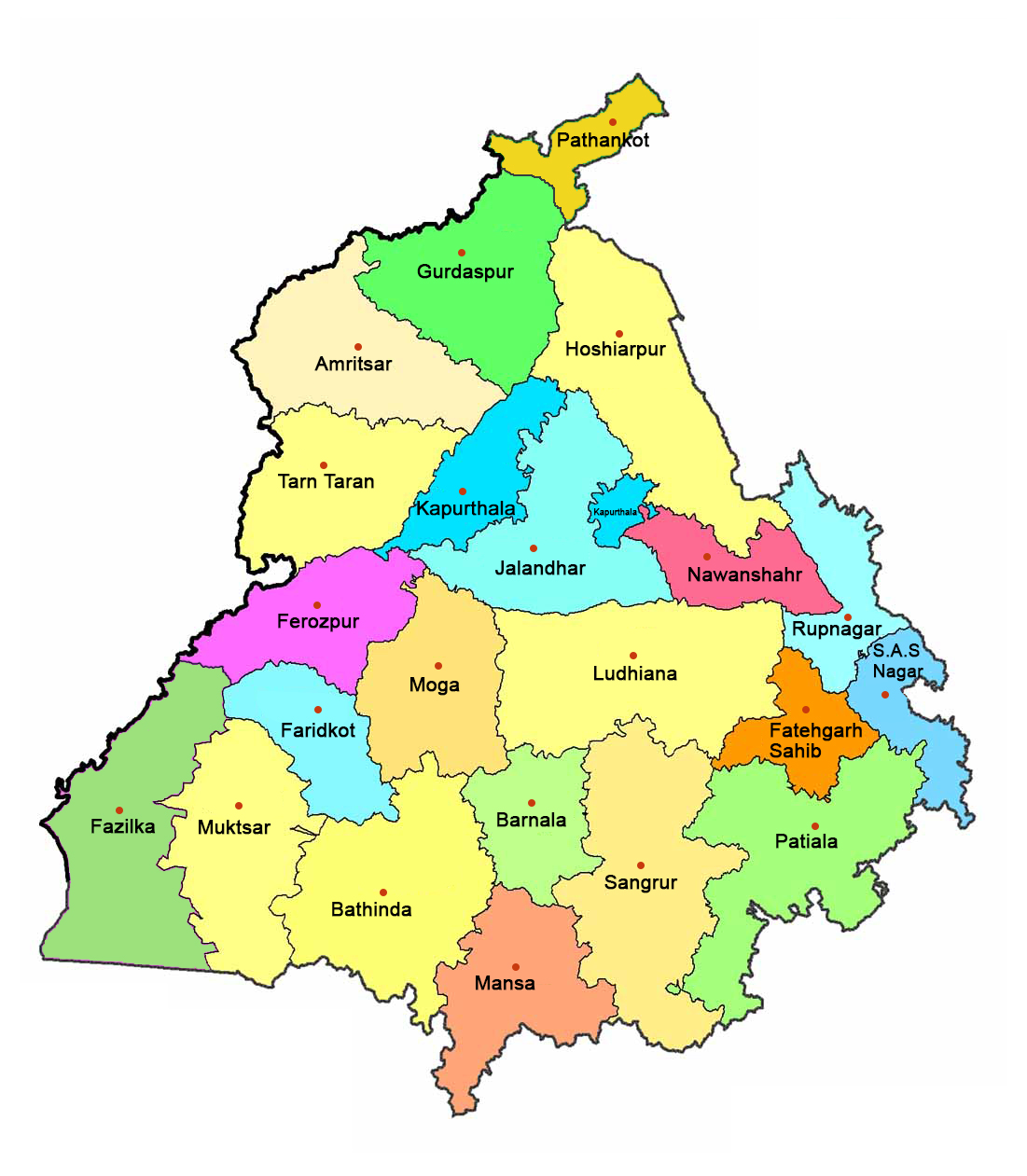Punjab – State’s information – Must know Facts 29/05/2019 – Posted in: STATE SERIES – Tags: Haryana, Madhya Pradesh, Punjab
PUNJAB
Introduction
The first known documentation of the word ‘Punjab’ is in the writings of Ibn Batuta, who visited the region in the fourteenth century.
The term came into wider use in the second half of the sixteenth century, and was used in the book Tarikh-e-Sher Shah Suri (1580), which describes the construction of a fort by ‘Sher Khan of Punjab’.
Reference of ‘Punjab’ can also be found in volume one of “Ain-e-Akbari”, written by Abul Fazal, where ‘Punjab’ describes the territory that can be divided into provinces of Lahore and Multan. Similarly, in the second volume of Ain-e-Akbari, the title of a chapter includes the word ‘Panjnad’ in it.
However, the first mentioning of Sanskrit equivalent of ‘Punjab’ occurs in the great epic, the Mahabharata, where it is described as pancha-nada, which means ‘country of five rivers’.
The Mughal King Jahangir also mentions the word Panjab in ‘Tuzk-i-Janhageeri’, derived from Persian and introduced by the Turkic conquerors of India, literally means “five” (panj) “waters” (ab), i.e., the Land of Five Rivers, referring to the five rivers which go through it. It was because of this that it was made the granary of British India.
It is one of the most ancient civilizations in the world with a distinguished culture.
Punjabi language has its origins in the Indo-European family of languages which included Persian and Latin.
It is birth place of a number of religious movements. Some of the prominent ones include Sikhism, Buddhism and many Sufi schools of Islam.
Origin of State
The Indian State of Punjab was created in 1947, when the partition of India split the former Raj province of Punjab between India and Pakistan.
The mostly Muslim western part of the province became Pakistan’s Punjab Province; the mostly Sikh eastern part became India’s Punjab state.
In 1950, two separate states were created; Punjab included the former Raj province of Punjab, while the princely states of Patiala, Nabha, Jind, Kapurthala, Malerkotla, Faridkot and Kalsia were combined into a new state, the Patiala and East Punjab States Union (PEPSU).
Himachal Pradesh was created as a union territory from several princely states and Kangra District. In 1956, PEPSU was merged into Punjab state, and several northern districts of Punjab in the Himalayas were added to Himachal Pradesh.
| Capital | Chandigarh
|
| Date of Formation | November 01, 1966 |
| State Border | Jammu & Kashmir, Himachal Pradesh, Haryana, Rajasthan |
| International Border | Pakistan |
| Division of Punjab | Majha, Doaba, Malwa |
| Number of Districts | 22 |
| State Animal | Blackbug |
| State Bird | BAccipiter Gentills (Baaz) |
| State Tree | Shisham |
| Tourist Places |
|
| Festivals | Lohri, Baisakhi, Gurupurb |
| Dances | Bhangra, Giddha |
| Art & Crafts | Phulkari or flower embroidery; wood inlay of Hoshiarpur on black shisham wood. |
| Language | Punjabi |
| Rivers | Beas, Sutlej, Ravi |
| Crops | Wheat, Gram, Barley, Oil Seeds, Maize, Rice, Groundnut |
| Cash Crops | Cotton, Sugarcane |
| Lakes | Mataur Lake |
| Wildlife Sanctuary |
|
| Ramsar Wetlands | Kanjli, Harike, Ropar |
| Doabs |
|
Culture
Punjabis celebrate numerous religious and seasonal festivals, such as Dussehra, Diwali, Baisakhi, and many more.
There are numerous anniversary celebrations as well in honour of the Gurus (the 10 religious leaders of Sikhism) and various saints.
Expressing happiness and gaiety through dance is a typical feature of such festivities, with bhangra, jhumar, and sammi being among the most popular genres.
Giddha, a native Punjabi tradition, is a humorous song-and-dance genre performed by women.
In addition to Sikh religious music, semi-classical Mughal forms, such as the khyal dance and the thumri, ghazal, and qawwali vocal performance genres, continue to be popular.
Poetry
Punjabi Poetry is renowned for its deep meaning, beautiful, exciting and hopeful use of words. Many compilations of Punjabi poetry and literature are being translated throughout the world into many languages. One of the most important Punjabi literatures is that of the revered ‘Guru Granth Sahib’.
Clothes
The traditional dress for Punjabi men is ‘Punjabi Kurta’ and ‘Tehmat’, especially the popular Muktsari style, which is being replaced by the kurta and pajama in the modern day Punjab. The traditional dress for women is the Punjabi Salwar Suit which replaced the traditional Punjabi Ghagra. The Patiala salwar is also very popular.
Facts
- Fatehgarh sahib is known as the Steel Town of India.
- In 1966, Haryana was carved out of Punjab.
- Punjabi, the official language of the state. It is written in the Gurmukhi Script.
- Satluj Yamuna Link Canal or SYL as it is popularly known, is a proposed 214-kilometer long canal in India to connect the Sutlej and Yamuna rivers.
- District Ludhiana is known for Woolen Industry.
- Jalandhar is for Sports goods indusrty.
- Kapurthala has Rail coach factory.
- Mukerian is known for Paper mill.
You can follow us on LinkedIn and for more updates related to UPSC IAS Preparation, Like our Facebook Page and subscribe our Diligent IAS Youtube Channel
Also read more about other Indian States

